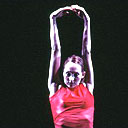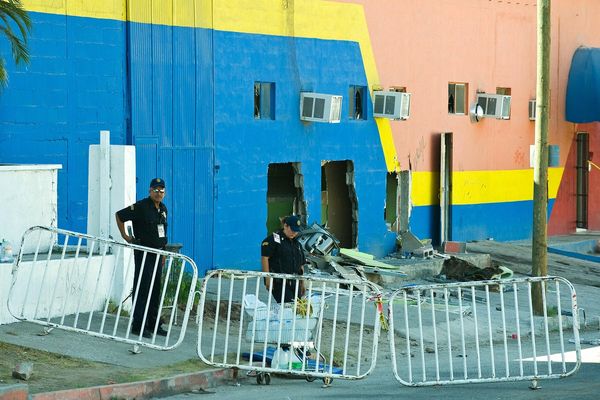
There is an unobtrusive timeline linking the four fine works in the second week of Rambert's 75th anniversary season, which to loyal fans will flag up milestones in the company's recent history. Glen Tetley's Pierrot Lunaire (acquired in 1967 and never long out of the repertory) signals the moment when Rambert radically transformed itself from classical to modern ensemble, and when Christopher Bruce, now Rambert's director, made the title role his own. Richard Alston's new work, Unrest, marks the 1980s, when he was Rambert's choreographer and director, as does its companion piece, Siobhan Davies's Sounding, which she created in 1989 when she was the company's associate choreographer. Finally, Wayne McGregor's Detritus, his first work for the company, shows a new generation stepping into line.
Unrest is choreographed to the violin and piano version of Arvo Part's Fratres, and shows Alston at his most intimately and musically engaged. Part's score is dominated by the violin, a nervy, febrile voice that strains to free itself from the measured sonorities of the piano even while it yearns to settle into the latter's harmonic and rhythmic embrace. Alston doesn't mime this relationship step for note, but opens with a high-strung solo that captures the violin's agitated energy. As the dance expands to accommodate the five other dancers, this restless spirit animates and unsettles even the most harmoniously unified sequences. The work becomes a charged and beautiful meditation on the conflicting impulses towards freedom and home.
In Sounding, Davies engages with the dramatic action of the music rather than with its dramatic logic. Giacinto Scelsi's Okanagon is an extraordinary experiment in the physical interaction of musicians with their instruments, and Davies's choreography mimes that effort and discovery. A tightly clumped trio reverberates as if the dancers actually were the sound of a tam-tam; another dancer knocks at the air. And this illusion - seeing the music as tangible activity - is framed by Peter Mumford's beautiful fretwork of light, which seems to suspend the dancers in some other dimension.
The design for Detritus is even more remarkable: a huge jointed sculpture that resembles a muscular proboscis and hovers round the dancers by means of levers and pulleys. This strange, looming presence makes the stage look bizarre, but its eccentric and quasi-human functioning also alerts us to the anatomical invention in the dance, which is both meticulous and extreme. McGregor's simultaneous exploration of the interface between ballet and modern dance, and the dynamic cusp between energy and entropy, produces dance that skids and darts across the stage yet holds intimations of a dark, lingering threat. The dancers blaze with intelligence. The audience love it.
Ends tomorrow. Box office: 020-7863 8000.







